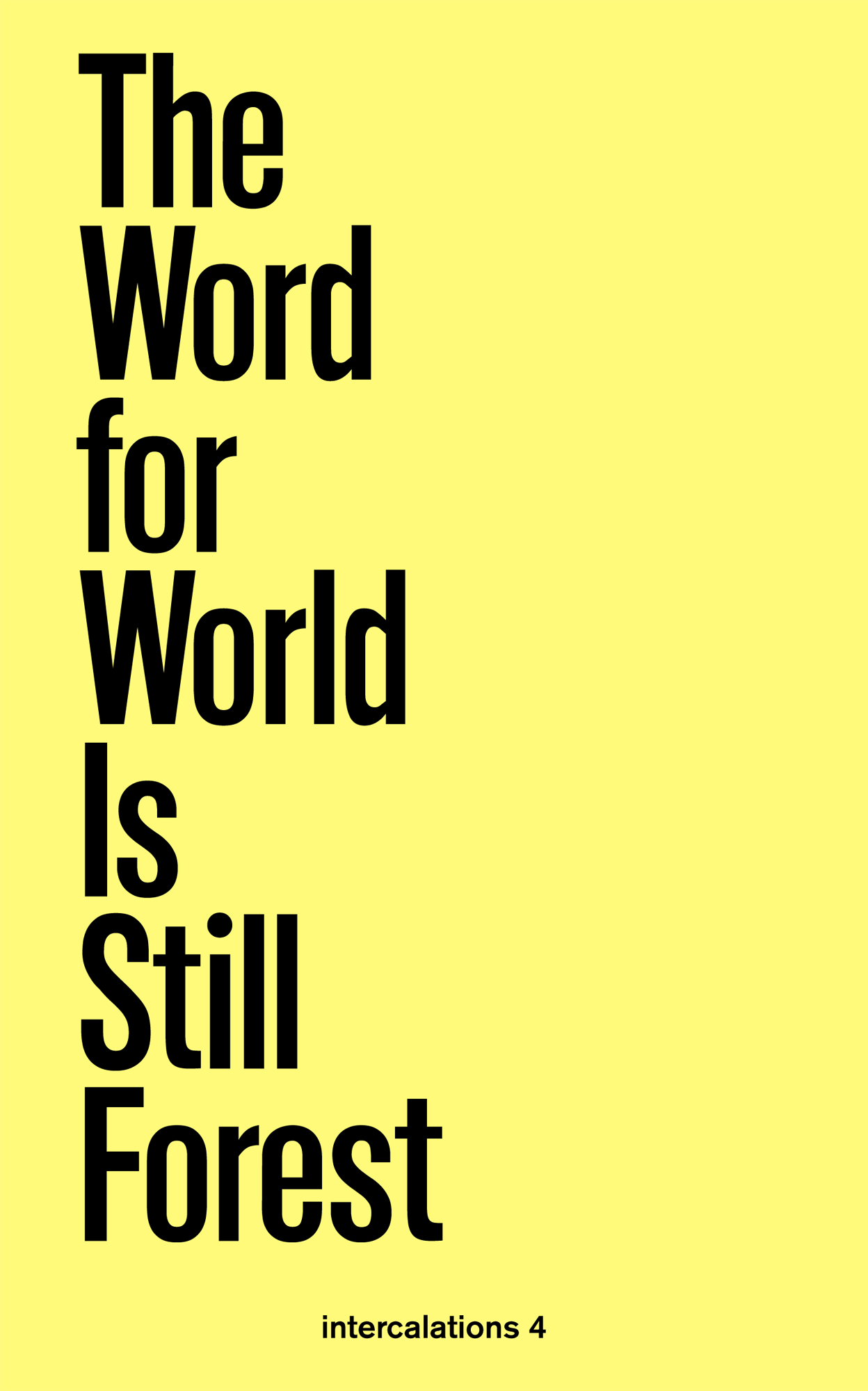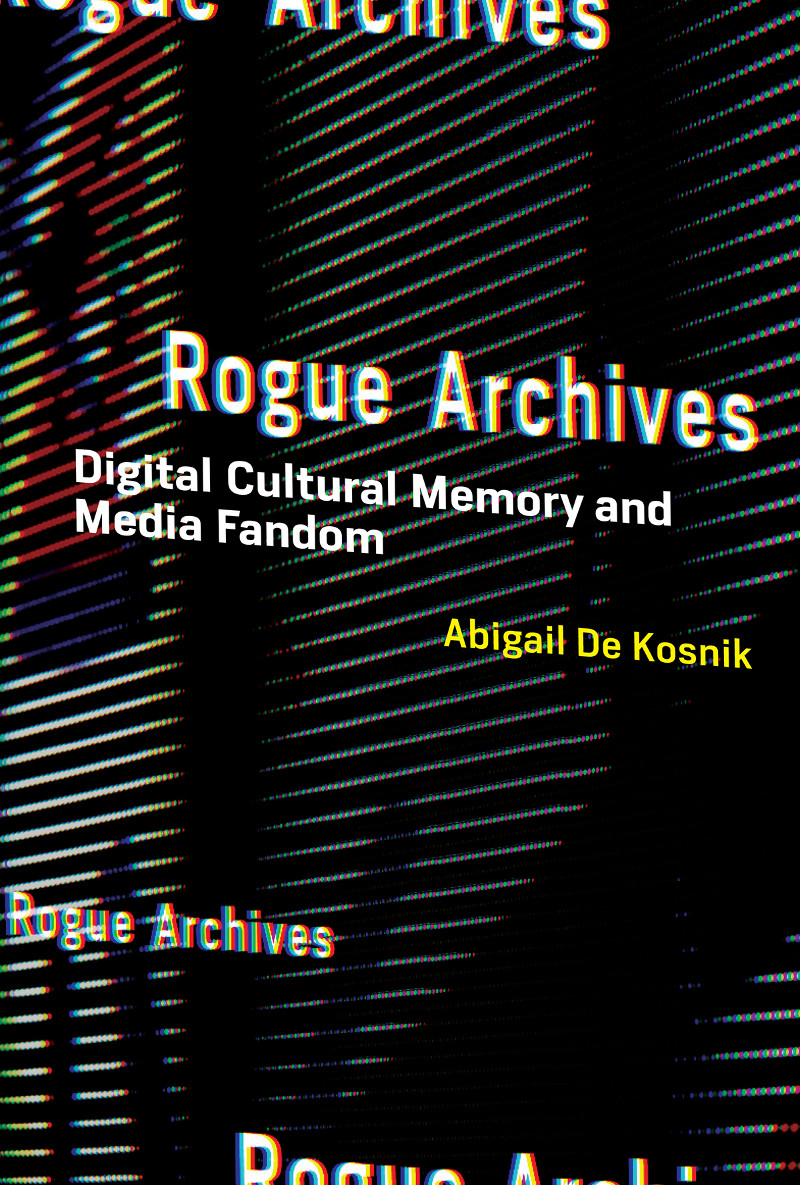The Word for World Is Still Forest (2017)
Filed under book | Tags: · anthropocene, botany, forest, nature, science fiction

“Taking its title from Ursula K. Le Guin’s 1972 novella, The Word for World Is Still Forest curates an homage to the forest as a turbulent, interconnected, multinature.
Moving from concepts of the forest as a thinking organism to the linear monocultural plantations that now threaten the life of global forests, the volume includes an interview with anthropologist Eduardo Kohn on perspectival multinatural semiotics based on his observations in Ecuador as well as a piece by Canadian forest ecologist Suzanne Simard, with visualizations by Kevin Beiler, examining how fungi networks uptake nutrients of salmon brought from sea to river to land by grizzlies and wolves. Curator Dan Handel presents an excerpted exhibition on “wood” as a vital element of forest mythology and the driver of industrial resource management. Media designer and data curator Yanni A. Loukissas adds a series of reflections on botanical data from Harvard University’s Arnold Arboretum.
An original typography of tree forms from artist Katie Holten’s Tree Alphabet reconnects the paper of the book page to its forest genealogy. Brazilian architect and urbanist Paulo Tavares contributes an annotated visual composition on Amazonian human rights violations and indigenous struggle, highlighting the hybrid literacies required by resistance movements fighting illegal logging and plantations. Shannon Lee Castleman also addresses illegal logging in her photo essay on the incremental harvesting practices in the diminished tropical forests of Indonesia, while the landscape architect Sandra Bartoli offers a little known history of the ancient trees of the urban forest known as the Berlin Tiergarten and Silvan Linden portrays a case study of Berlin’s ever-more controversial urban “wild.” The Nonuya elder and shaman Abel Rodríguez contributes an oral narrative of the Ancestral Tree of Plenty, transcribed in collaboration with the Tropen Bos International Colombia forest conservation group, alongside a series of his drawings of medicinal plants used for botanical conservation efforts. In resonance, the book also contains an essay by Pedro Neves Marques about the particularity of Amerindian images of naturecultures. Finally, the book includes excerpts of Ursula K. Le Guin’s original text, The Word for World Is Forest.”
With contributions by Sandra Bartoli, Shannon Lee Castleman, Dan Handel, Katie Holten, Eduardo Kohn, Ursula K. Le Guin, Silvan Linden, Yanni A. Loukissas, Abel Rodríguez, Suzanne Simard & Kevin Beiler, Paulo Tavares, and others.
Edited by Anna-Sophie Springer and Etienne Turpin
Publisher K. Verlag & Haus der Kulturen der Welt, Berlin, 2017
Intercalations series, 4
ISBN 9783981863505
xix+202 pages
Abigail De Kosnik: Rogue Archives: Digital Cultural Memory and Media Fandom (2016)
Filed under book | Tags: · archive, archiving, cultural memory, digital media, diy, fan culture, fiction, internet, preservation

“The task of archiving was once entrusted only to museums, libraries, and other institutions that acted as repositories of culture in material form. But with the rise of digital networked media, a multitude of self-designated archivists—fans, pirates, hackers—have become practitioners of cultural preservation on the Internet. These nonprofessional archivists have democratized cultural memory, building freely accessible online archives of whatever content they consider suitable for digital preservation. In Rogue Archives, Abigail De Kosnik examines the practice of archiving in the transition from print to digital media, looking in particular at Internet fan fiction archives.
De Kosnik explains that media users today regard all of mass culture as an archive, from which they can redeploy content for their own creations. Hence, “remix culture” and fan fiction are core genres of digital cultural production. De Kosnik explores, among other things, the anticanonical archiving styles of Internet preservationists; the volunteer labor of online archiving; how fan archives serve women and queer users as cultural resources; archivists’ efforts to attract racially and sexually diverse content; and how digital archives adhere to the logics of performance more than the logics of print. She also considers the similarities and differences among free culture, free software, and fan communities, and uses digital humanities tools to quantify and visualize the size, user base, and rate of growth of several online fan archives.”
Publisher MIT Press, 2016
ISBN 9780262034661, 0262034662
x+430 pages
Reviews: Jan Baetens (Leonardo, 2017), Amanda Gilroy (PopMatters, 2017), Ludi Price (2016), Silvia Bertolotti (DigiCult, 2016).
Interview with author: Henry Jenkins (2016), Christina Yang (TDR, 2019).
HTML (added on 2020-3-13)
PDF (10 MB, updated on 2020-3-12)
Academia.edu (added on 2020-3-13)
Thomas McEvilley: The Triumph of Anti-Art: Conceptual and Performance Art in the Formation of Post-Modernism (2005)
Filed under book | Tags: · art history, conceptual art, dada, performance art, postmodernism

“From roughly 1965 to 1980, Conceptual Art and Performance Art took center stage throughout the western world, introducing new and complex ideas to the practice of contemporary art which reverberate to this day. Thomas McEvilley’s The Triumph of Anti-Art not only explains the origins of these controversial and compelling art forms, but also uncovers many relatively unrecognized yet indisputably important artists, American and European. He guides the reader through a thicket of seemingly arcane meanings of these nonrepresentational art form, and brings clarity to the intentions and agendas of these artists, as well as to their real world contexts. The long-term effects of “anti-art,” and the development of the pluralistic situation known as post-Modernism, are described in vivid detail.
From the Greek philosopher Diogenes, through the 19th-century German romantic tradition, to the modern art critic Clement Greenberg, McEvilley traces philosophical ideas and political impulses that temporarily led to a toppling of painting and sculpture in the decades right after World War II. Following an overview of Modernism and Marcel Duchamp’s influence, a chapter on Yves Klein sets the state for surveys of Conceptual Art and its practitioners, including Bernar Venet, John Baldessari, and Francis Alys. McEvilley then gives equal focus to Performance Art with chapters on Andy Warhol, Brian O’Doherty, and Marina Abramovic and Ulay, among others. At the end of the volume the “triumph” of “anti-art” is explored in depth, as are the origins of the terms, practices, and politics of global art history.”
Publisher McPherson & Co., Kingston, N.Y., 2005
ISBN 0929701674, 9780929701677
391 pages
Reviews: Publishers Weekly (2005), Lisa Paul Streitfeld (NY Arts, 2006).
Comment (0)
